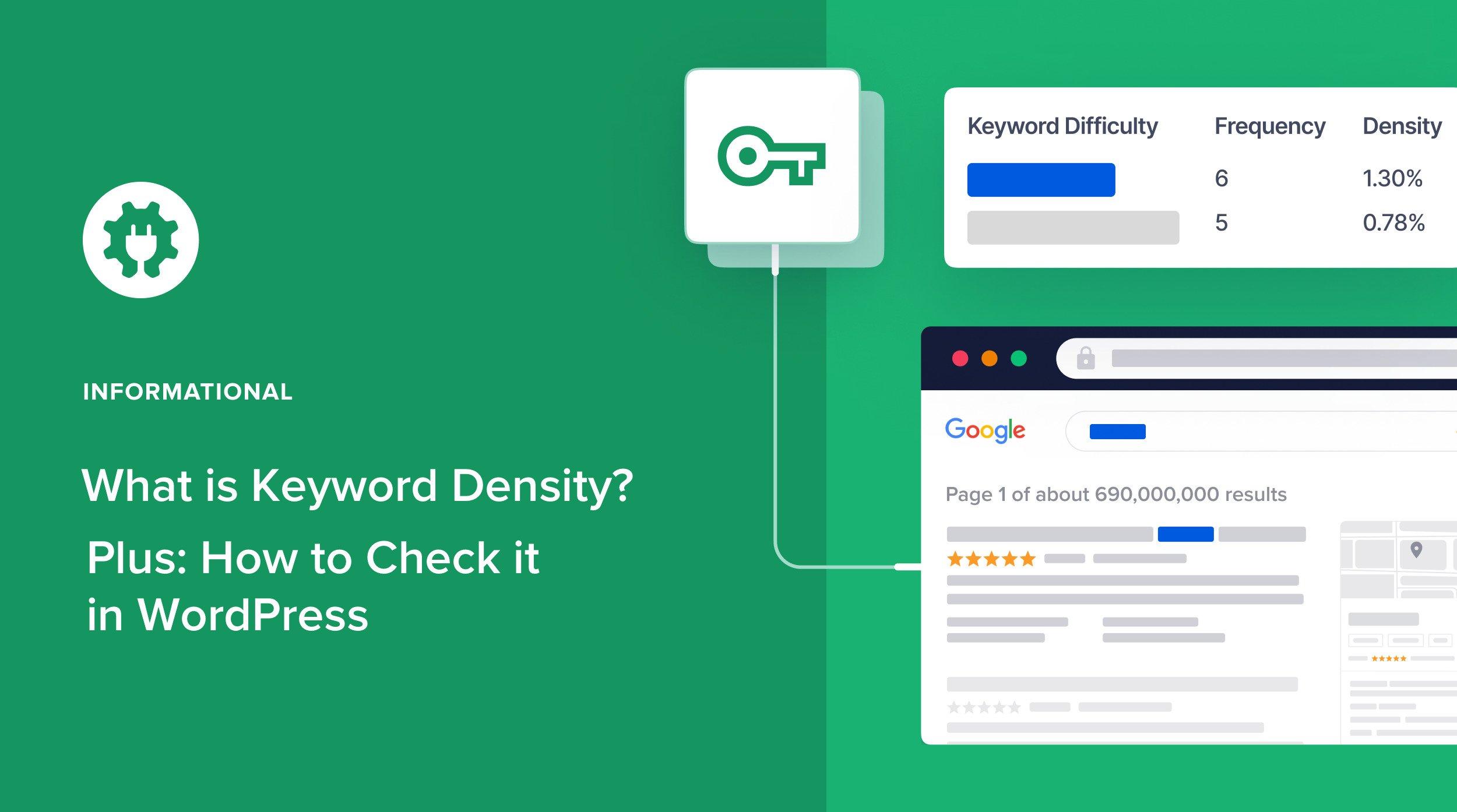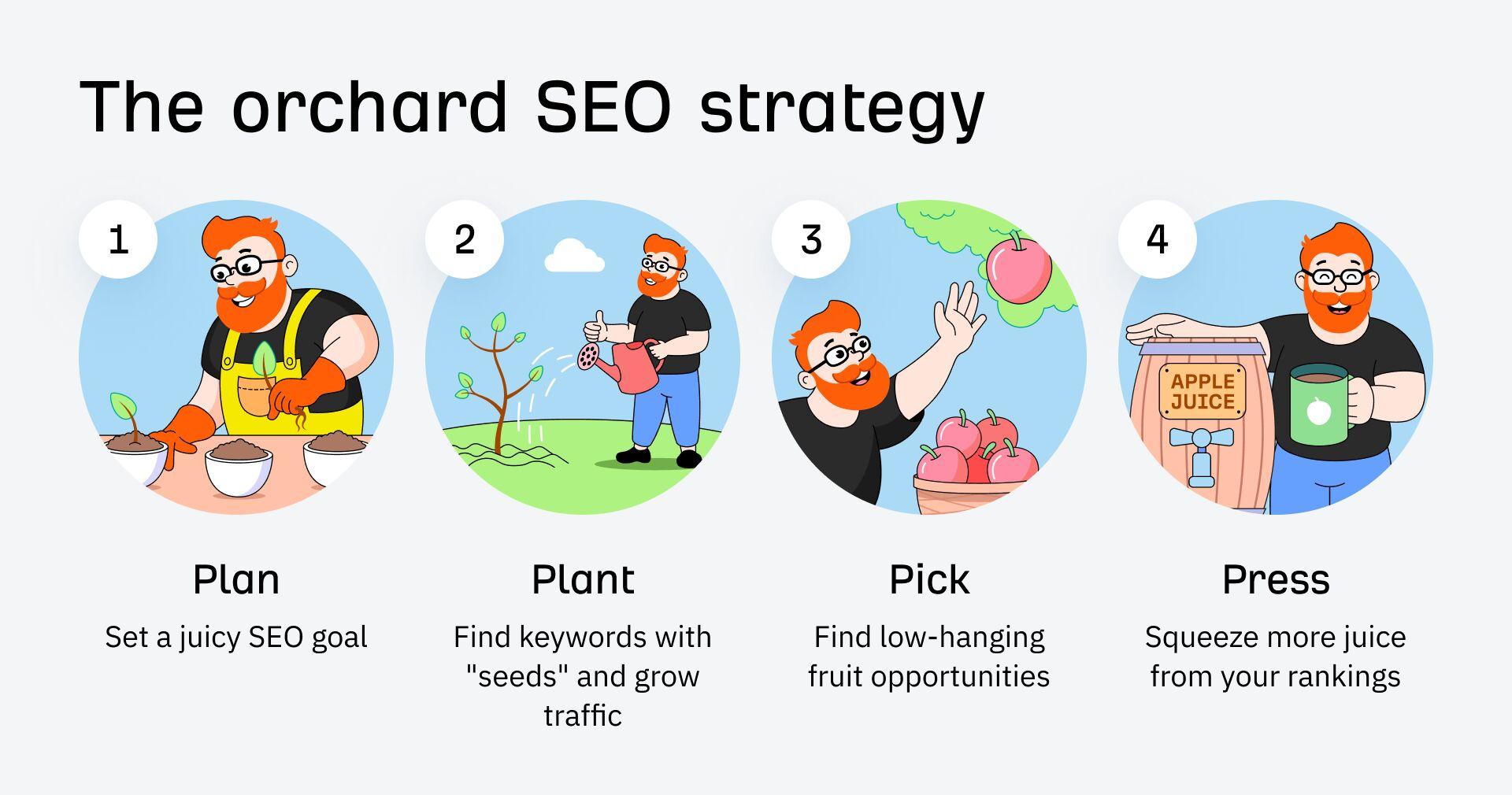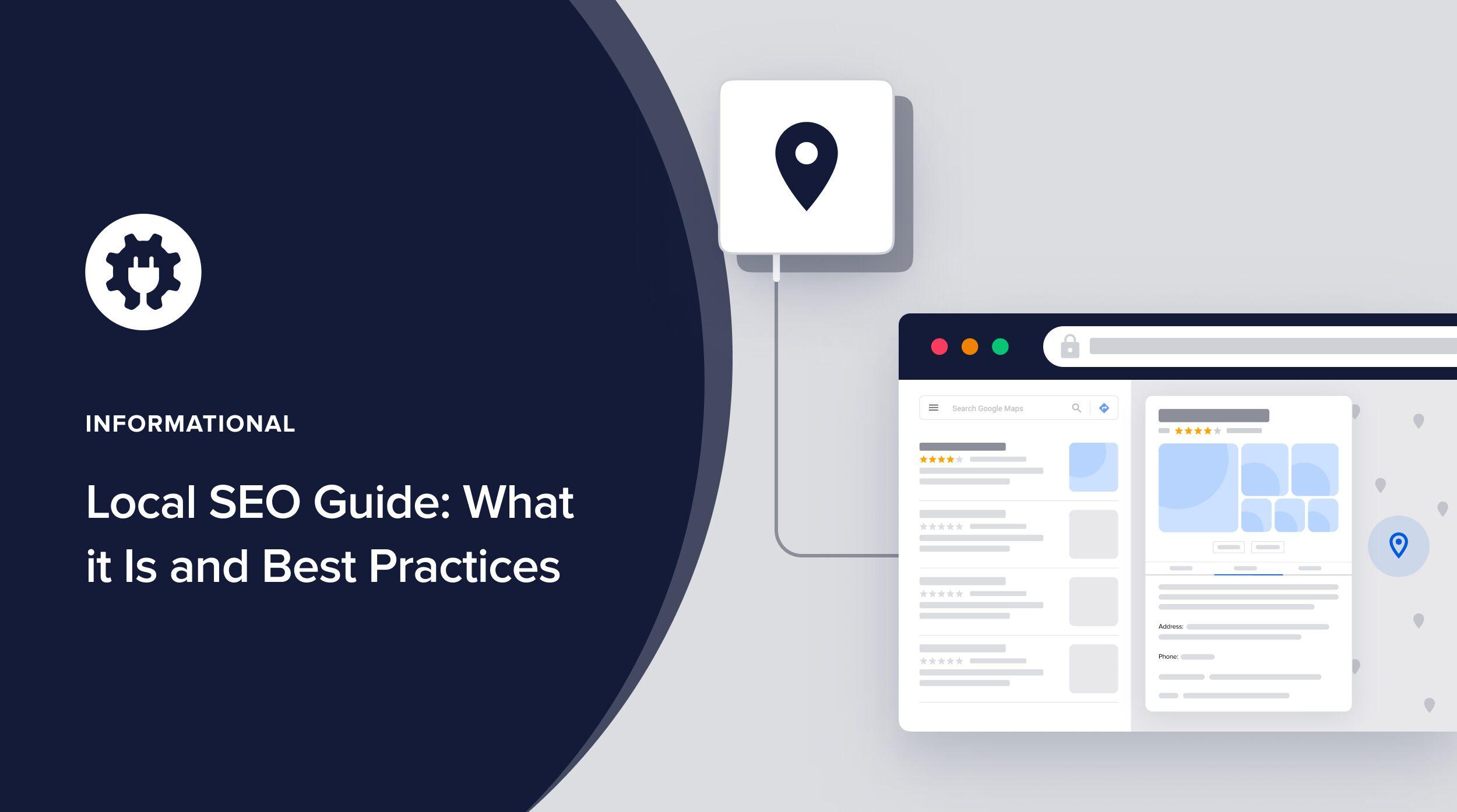Introduction:
In the ever-evolving world of digital marketing, search engine optimization (SEO) remains a hot topic—often surrounded by misconceptions and myths that can mislead even the savviest marketers. If you’ve ever found yourself scratching your head over conflicting advice about how to rank higher on Google, you’re not alone. From the idea that keywords are all that matter to the belief that social media doesn’t impact SEO, these myths can cloud your judgment and hinder your online success.
But fear not! In this article, we’re diving deep to debunk four of the most common SEO myths that could be holding your website back.By shedding light on these misconceptions, we’ll equip you with the knowledge you need to navigate the SEO landscape with confidence. So, let’s bust some myths and set the record straight—your website’s visibility is just a few insights away!
Understanding SEO Myths That Hold You Back
Many businesses face challenges in scaling their online presence due to misconceptions surrounding SEO practices. Breaking through these misunderstandings can unlock the potential for enhanced visibility and increased traffic. Here are some prevalent myths that might potentially be holding you back:
- Myth 1: SEO is a one-time task. This couldn’t be further from the truth. SEO is an ongoing process that requires regular updates and strategy adjustments. Search engines are constantly evolving,and so should your SEO techniques.
- Myth 2: Keywords are all that matter. While keywords are vital, they’re just one aspect of a comprehensive SEO strategy. Content quality, user experience, and mobile optimization also play critical roles in ranking well.
- Myth 3: More backlinks always equal better rankings. Not all backlinks are created equal. Quality trumps quantity. building relationships with authoritative sites in your niche can provide greater benefits then simply amassing a large number of low-quality links.
- Myth 4: SEO is too technical for small businesses. while technical SEO can be complex, small businesses can easily implement best practices through user-friendly tools and resources. You don’t need a tech degree to effectively manage your SEO.
It’s essential to debunk these myths to move forward effectively. Many businesses find themselves stuck in a cycle of frustration, often due to outdated beliefs about how SEO functions.Recognizing the evolving nature of SEO and embracing a holistic approach can lead to significant growth.
To further illustrate the impact of these myths,consider the following table that contrasts popular misconceptions with the reality of effective SEO practices:
| Myth | Reality |
|---|---|
| SEO is a one-time task | SEO requires continuous effort and updates. |
| Only keywords matter | Content, user experience, and site structure are vital. |
| More backlinks, better rankings | Quality backlinks from reputable sources are key. |
| SEO is too technical | accessible tools and learning resources are available. |
Understanding these myths allows you to foster a more effective SEO strategy. By focusing on current practices and dismissing outdated notions, you can position your business for long-term success in the digital landscape. embrace the truth behind SEO for a pathway to enhanced online visibility.

The Keyword Density Fallacy Explained
The concept of keyword density has long been a pillar of search engine optimization, with many believing that a specific percentage of keywords on a page is essential for ranking well.However, this notion is not only outdated but fundamentally flawed. The focus on achieving a particular keyword density can lead to unnatural writng, which ultimately detracts from user experience.
Let’s consider why this approach is misguided:
- Search Engines Evolve: Algorithms have grown increasingly sophisticated, factoring in context, relevance, and user intent rather than mere keyword frequency. They can discern the overall theme of a piece, making keyword stuffing an obsolete tactic.
- Quality Over Quantity: Crafting content that genuinely engages readers is far more valuable than adhering to an arbitrary keyword ratio. Content that resonates with users naturally incorporates keywords without forced repetition.
- User Experience Matters: Search engines are designed to prioritize user satisfaction. Keyword-heavy content often leads to poor readability, causing users to bounce away quickly—an important metric that search engines monitor.
To illustrate this fallacy further, let’s compare customary keyword density with modern content optimization practices. The table below highlights the stark differences:
| Old Approach | Modern approach |
|---|---|
| Focus on keyword density percentages (e.g., 1-3%) | Emphasis on topic relevance and user intent |
| Repetitive keyword usage | Natural integration of related terms and phrases |
| Content created primarily for search engines | Content created primarily for the audience |
rather than getting caught up in the minutiae of keyword density, focus on creating high-quality, informative content that addresses your audience’s needs. This shift in mindset not only improves your chances of ranking well but also fosters a loyal readership that appreciates the value you provide.
Why Quality Content Trumps Quantity Every Time
In the fast-paced world of digital marketing, it’s easy for businesses to get caught up in the numbers game. Many believe that more content equals better visibility and higher rankings. However, this approach overlooks a crucial factor: the quality of that content. When it comes to SEO, high-quality content consistently outshines a sheer volume of mediocre posts.
Creating quality content means producing material that is not only informative but also engaging and valuable to your audience. This type of content is more likely to be shared, linked to, and revisited by users, all of which are essential signals to search engines like Google. In contrast, a flood of low-quality articles can lead to higher bounce rates and lower user engagement, which can ultimately harm your site’s rankings.
When you focus on quality, you also enhance your brand’s credibility. Readers are more inclined to trust and engage with content that is well-researched and thought-provoking.Over time, this builds authority within your niche, positioning your brand as a go-to resource. Conversely, if your content is riddled with errors or lacks depth, users will quickly seek information elsewhere, diminishing your reputation.
Moreover, crafting fewer but richer pieces allows for deeper exploration of topics. Rather of skimming the surface, you can dive into details that resonate with your audience’s needs, answering their questions and solving their problems. This depth not only keeps readers on your page longer but also encourages them to explore additional resources you offer.
| Quality Content Benefits | Quantity Content Drawbacks |
|---|---|
| Increased user engagement | High bounce rates |
| Improved brand authority | Lower trust levels |
| Better SEO performance | Reduced organic reach |
| Enhanced shareability | Minimal social interaction |
Ultimately, investing time and resources into producing top-notch content pays off in the long run.It’s not about how much you publish,but rather how effectively you engage your audience and satisfy their needs. This approach not only leads to sustainable SEO results but also fosters a loyal community around your brand.
Link Building Demystified: It’s Not Just About Numbers
When it comes to link building, many people get hung up on the sheer volume of links they can acquire. However, this approach overlooks a crucial aspect: quality over quantity. it’s not just about how many links point to your site, but where those links come from. Building links from high-authority sites in your niche can substantially boost your credibility and search engine ranking.
Consider the following factors that can enhance your link building strategy:
- Relevance: Links from sites that are relevant to your industry or niche carry more weight than random links.
- Authority: A link from a well-established and respected website can do wonders for your SEO.
- Diversity: A mix of different types of backlinks, such as guest posts, editorial links, and directory submissions, provides a healthier backlink profile.
Another misconception is that all links are created equal. In reality, some links can harm your SEO efforts. for instance, links from spammy or low-quality sites can lead to penalties from search engines.Thus, it’s essential to focus on earning links through legitimate means, such as creating valuable content that others want to share or through outreach to influencers in your field.
To illustrate the difference in impact between high-quality and low-quality links, consider the following comparison:
| Type of Link | Impact on SEO |
|---|---|
| High-Quality Link from Niche Authority | Boosts credibility and rankings |
| Low-Quality spam Link | Risk of penalties and lower rankings |
Ultimately, an effective link building strategy requires a thoughtful approach that prioritizes meaningful connections over sheer numbers.By focusing on quality links from reputable sources, you not only improve your SEO but also foster a more sustainable online presence that resonates with your target audience.

Mobile Optimization Is not Optional
In today’s digital landscape, having a mobile-optimized website is crucial for success. With over half of global web traffic coming from mobile devices,if your site isn’t optimized for these users,you’re not just missing out on potential visitors – you’re actively pushing them away. A seamless mobile experience is not merely an enhancement; it’s a necessity for retaining users and improving your search engine rankings.
Here are some key reasons why mobile optimization is essential:
- User Experience: A site that is arduous to navigate on mobile devices frustrates users, leading to high bounce rates. An optimized site ensures easy access to information, keeping users engaged.
- SEO Benefits: google prioritizes mobile-friendly websites in its search results. If your site isn’t optimized, you risk losing visibility and traffic.
- Conversion Rates: Optimized mobile experiences lead to higher conversion rates. Users are more likely to complete purchases or sign up for newsletters if they can easily navigate your site.
When considering mobile optimization, remember the importance of responsive design. This approach allows your website to adapt to various screen sizes seamlessly, ensuring that users have a consistent experience regardless of their device. Furthermore, consider the importance of loading speed. According to studies,users expect a page to load in less than three seconds. Slow-loading sites not only frustrate users but can also negatively impact your search rankings.
Moreover, don’t overlook the meaning of testing your site on different devices and browsers. Regular testing can definitely help identify issues that may affect user experience and search engine performance. Use tools like Google’s Mobile-Friendly Test to assess your site’s readiness for mobile audiences.
| Aspect | Mobile Optimized | Not Mobile Optimized |
|---|---|---|
| Load Speed | Fast and efficient | Slow and frustrating |
| User Engagement | High retention rates | High bounce rates |
| SEO Ranking | Improved visibility | Lower search rankings |

SEO is a One-time Effort: The Ongoing Reality
One of the most pervasive myths about SEO is that it’s a one-and-done process. Many believe that once they optimize their website and content, they can simply sit back and watch their traffic grow. Though, the reality is far different.SEO is an ongoing effort that requires attention, adaptation, and continuous enhancement.
Search engines are constantly updating their algorithms to enhance user experience and deliver the most relevant results. What worked yesterday may not be effective today. Here are some reasons why ongoing SEO efforts are essential:
- Algorithm Updates: Search engines frequently roll out updates that can impact your rankings. Staying informed and adjusting your strategy accordingly is crucial.
- Competitive Landscape: Your competitors are also optimizing their sites. To maintain your position, you’ll need to regularly optimize your content and keep an eye on what others are doing.
- Content freshness: Regularly updating your website with fresh content not only engages your audience but also signals to search engines that your site is active and relevant.
- User Behavior Changes: As user preferences and behaviors evolve, so should your SEO strategy. Understanding your audience is key to maintaining your search visibility.
To illustrate the ongoing nature of SEO, consider maintaining a garden. You can’t just plant seeds and expect a flourishing garden forever. You need to water, prune, and occasionally replant to keep it thriving. Similarly, an SEO strategy needs regular nurturing to adapt to changes in search engine algorithms, user behavior, and market dynamics.
here’s a simple comparison of one-time versus ongoing SEO efforts:
| One-Time SEO Effort | Ongoing SEO Effort |
|---|---|
| Initial keyword research | Regular updates to keyword strategy based on performance |
| Website optimization | Continuous optimization for technical SEO and user experience |
| One blog post creation | Consistent content creation to keep audience engaged |
| Link building campaign | Ongoing efforts for acquiring new backlinks |
Ultimately, viewing SEO as a long-term commitment rather than a one-time project enables businesses to build sustainable online visibility and growth. embrace the journey of SEO as a continual process, and you’ll reap the rewards of your efforts in the long run.

local SEO: Beyond Just Google My Business
When it comes to local SEO, many business owners make the mistake of thinking that having a Google My Business (GMB) listing is all they need. While GMB is undoubtedly a crucial component,the world of local SEO extends far beyond just this one platform. To truly harness the power of local search,businesses must embrace a more comprehensive approach.
Boost Your Local presence with These Strategies:
- Optimize your website for local keywords, ensuring that your content reflects the terminology and phrases that potential customers are using in their searches.
- Build local backlinks by collaborating with local businesses,sponsoring community events,or contributing to local blogs and news sites.
- Encourage online reviews across multiple platforms, not just Google. Sites like Yelp, Facebook, and TripAdvisor also play a vital role in shaping your local reputation.
Another common oversight is neglecting the power of local content. Crafting blog posts or articles that are relevant to your community can significantly enhance your local SEO efforts. Whether it’s highlighting local events, sharing case studies of satisfied customers, or discussing community issues, providing value through localized content can set you apart from competitors.
Consider the Following Points:
| Local SEO Tactic | Importance |
|---|---|
| Optimizing NAP (Name,Address,Phone) | Ensures consistency across all platforms,boosting credibility. |
| Building Local Citations | Enhances visibility and rankings in local search results. |
| engaging with the Community | Fosters trust and loyalty, leading to more referrals. |
Lastly, remember that local SEO is not a one-time effort. The landscape is constantly changing, influenced by user behavior and search engine algorithms. Regularly updating your site, maintaining your GMB profile, and adapting your strategies are essential to staying ahead in the local search game. Embrace a holistic approach to local SEO, and watch your business thrive in your community!

The Truth About Social Media and SEO
Social media and SEO frequently enough find themselves tangled in a web of misconceptions. One prevalent myth is that social media directly influences search engine rankings. While it’s true that having a strong social media presence can boost your brand visibility, it doesn’t directly increase your SEO rankings. Rather, social media acts as a catalyst for driving traffic to your site, which can indirectly benefit your SEO efforts.
Consider the following points:
- Traffic Generation: Social media platforms are excellent for generating traffic. When users share your content, it increases the likelihood of attracting visitors who may link back to your site.
- Brand awareness: A robust social media presence helps to build brand recognition. The more familiar users are with your brand, the more likely they are to click on your links in search results.
- Content Longevity: Content shared on social media can have a much longer shelf life. A single post can continue to drive traffic long after it’s been published.
Another misconception is that social media profiles themselves can rank in search results. While it’s true that these profiles can appear in searches, the focus should be on optimizing your website content to rank higher. social media can complement your overall strategy, but it should not overshadow the importance of a well-optimized website.
| Myth | Truth |
|---|---|
| Social media boosts SEO rankings | It drives traffic, indirectly improving SEO. |
| Social media profiles rank higher than websites | Web content should be prioritized for ranking. |
| More followers mean better SEO | Engagement and quality of content matter more. |
while social media is not a direct ranking factor for search engines, it plays an instrumental role in enhancing your online presence. By leveraging social media effectively, you can amplify your content’s reach, drive quality traffic, and ultimately support your SEO goals.
Data-Driven SEO: Making Informed Decisions
In the evolving landscape of digital marketing, one thing remains clear: data is king. Understanding and leveraging analytics can turn the tides in your SEO strategy.many businesses still follow outdated practices based on myths, rather than solid data. Let’s explore how relying on data can help you debunk these misconceptions and make informed decisions.
One prevalent myth is that keyword density is the most critical factor for ranking. In reality, search engines have advanced significantly. Today,they prioritize user experience and content relevance over mere keyword repetition.By analyzing user engagement metrics such as time on page and bounce rates, you can gain insights into what truly resonates with your audience. This shift allows you to create high-quality content that meets user intent.
Another misconception is that backlinks are all that matter for SEO. While they do play an essential role, focusing solely on quantity rather than quality can lead to a detrimental backlink profile. Instead, utilize tools to track your backlink sources and their authority. Engaging with reputable domains and influencers will not only enhance your credibility but also drive more targeted traffic.
| Backlink Quality Indicators | Description |
|---|---|
| Domain Authority | A score indicating the strength of a website’s backlink profile. |
| Relevance | How closely the linking site relates to your niche or industry. |
| Traffic Volume | Assessing the amount of traffic the linking site receives. |
There’s also the myth that SEO is a one-and-done deal. Many businesses believe that once they optimize their site, they can sit back and relax. Though, the digital realm is dynamic. Regularly tracking your site’s performance using analytics tools enables you to adapt to changes in user behavior and search engine algorithms. Make it a habit to review and adjust your strategies consistently.
Lastly, the notion that social media doesn’t impact SEO is misleading. While social signals may not be a direct ranking factor, the visibility and traffic generated through social platforms can significantly influence your SEO efforts. By analyzing referral traffic and social engagement metrics, you can better understand how these channels contribute to your overall digital strategy.

Future-Proofing Your SEO Strategy Against Common Misconceptions
In the ever-evolving world of digital marketing, misunderstandings about SEO can hinder your website’s performance. It’s crucial to recognize and dispel these myths to ensure your strategy remains robust and effective. Here are some common misconceptions and the truths behind them.
Myth 1: SEO is a One-Time Task
Many believe that once their website is optimized, their SEO work is done. However, SEO is an ongoing process that requires regular updates and adjustments. Search engines continuously change their algorithms, and staying ahead means consistently refining your strategies. Make sure to:
- Monitor your site’s performance regularly.
- Update content to keep it fresh and relevant.
- Adapt to changing keywords and user behaviors.
Myth 2: Keyword Stuffing Guarantees Higher Rankings
in the past, cramming as many keywords as possible into your content might have worked, but today’s algorithms prioritize user experience and content quality. Rather of focusing on keyword quantity, aim for:
- Natural integration of keywords.
- Engaging, informative content that adds value.
- Use of semantic keywords to enhance context.
Myth 3: Social Media Directly Impacts SEO Rankings
While social media can help increase brand visibility and drive traffic to your site, it doesn’t directly influence your search engine rankings. However, a strong social media presence can lead to more backlinks and traffic, which are beneficial for SEO. focus on:
- Creating shareable content that resonates with your audience.
- Engaging with followers to foster community and trust.
- Using social media analytics to refine your approach.
Myth 4: More Backlinks Always Mean Better Rankings
Not all backlinks are created equal. Quality trumps quantity in the backlink world. A few backlinks from reputable sites can significantly boost your authority, while many links from low-quality sources can harm your rankings. Prioritize:
- Building relationships with authoritative sites in your niche.
- Creating high-quality, shareable content that naturally attracts links.
- Monitoring your backlink profile to disavow harmful links.
By understanding these myths and focusing on a holistic,adaptive SEO approach,you can future-proof your strategy against the pitfalls of common misconceptions and thrive in the competitive online landscape.
Frequently Asked Questions (FAQ)
Q&A on “Four Common SEO Myths Debunked”
Q1: What are some common myths about SEO that people still believe today?
A1: Great question! One of the most persistent myths is that SEO is a one-time task. Many people think that once they’ve optimized their website, they’re done. In reality, SEO is an ongoing process. Search engines constantly update their algorithms, and competitors are always trying to improve their rankings. Regular updates and adjustments are essential to stay relevant and maintain visibility.
Q2: I’ve heard that keywords are no longer important for SEO. Is that true?
A2: not at all! While the approach to using keywords has evolved, they are still a crucial component of SEO. The myth that keywords are dead comes from a misunderstanding of how to use them effectively. It’s not just about stuffing your content with keywords; it’s about strategically placing them where they make sense and provide value to your readers. Quality content that addresses user intent will always benefit from smart keyword usage.
Q3: Is it true that more backlinks always lead to better rankings?
A3: This is a common misconception! while backlinks are indeed important for SEO, it’s not just about quantity; quality matters much more. Having a few high-quality backlinks from reputable sites can significantly boost your ranking, while dozens of low-quality links can actually harm it. Focus on building relationships and earning links from credible sources in your niche – that’s where the real value lies.
Q4: Can you really guarantee a number one search ranking?
A4: Sadly, no reputable SEO professional can guarantee a number one ranking. Search engine algorithms are complex and constantly changing, influenced by numerous factors beyond anyone’s control. Instead of focusing on guarantees, look for SEO strategies that prioritize sustainable growth and ethical practices. It’s about improving your website’s overall quality and relevance, which will lead to better rankings over time.
Q5: What should I take away from these myths?
A5: The key takeaway is to approach SEO with a clear understanding of its complexities.Avoid falling for oversimplified beliefs and focus on continuous learning and adaptation. SEO is a marathon, not a sprint, so invest your efforts in creating valuable content, optimizing your website, and building genuine connections in your industry. By debunking these myths, you’ll be better equipped to navigate the ever-changing landscape of SEO!
Wrapping Up
And there you have it—four of the most common SEO myths debunked! It’s easy to get caught up in the myths and misconceptions that swirl around the world of search engine optimization. But understanding the facts is crucial if you want to elevate your online presence and drive real results.
Remember, SEO isn’t just about tricking Google; it’s about creating valuable content that resonates with your audience. By focusing on quality over quantity, optimizing for genuine user experience, and dismissing outdated practices, you’ll be well on your way to achieving those coveted top spots in search results.
So, the next time someone tells you that SEO is a fast fix or that keyword stuffing is the way to go, you’ll be armed with the facts to set them straight. keep learning, stay curious, and embrace the ever-evolving nature of SEO. Your website—and your visitors—will thank you for it!
If you found this article helpful, why not share it with your friends or colleagues? Let’s spread the knowledge and bust these myths wide open!




